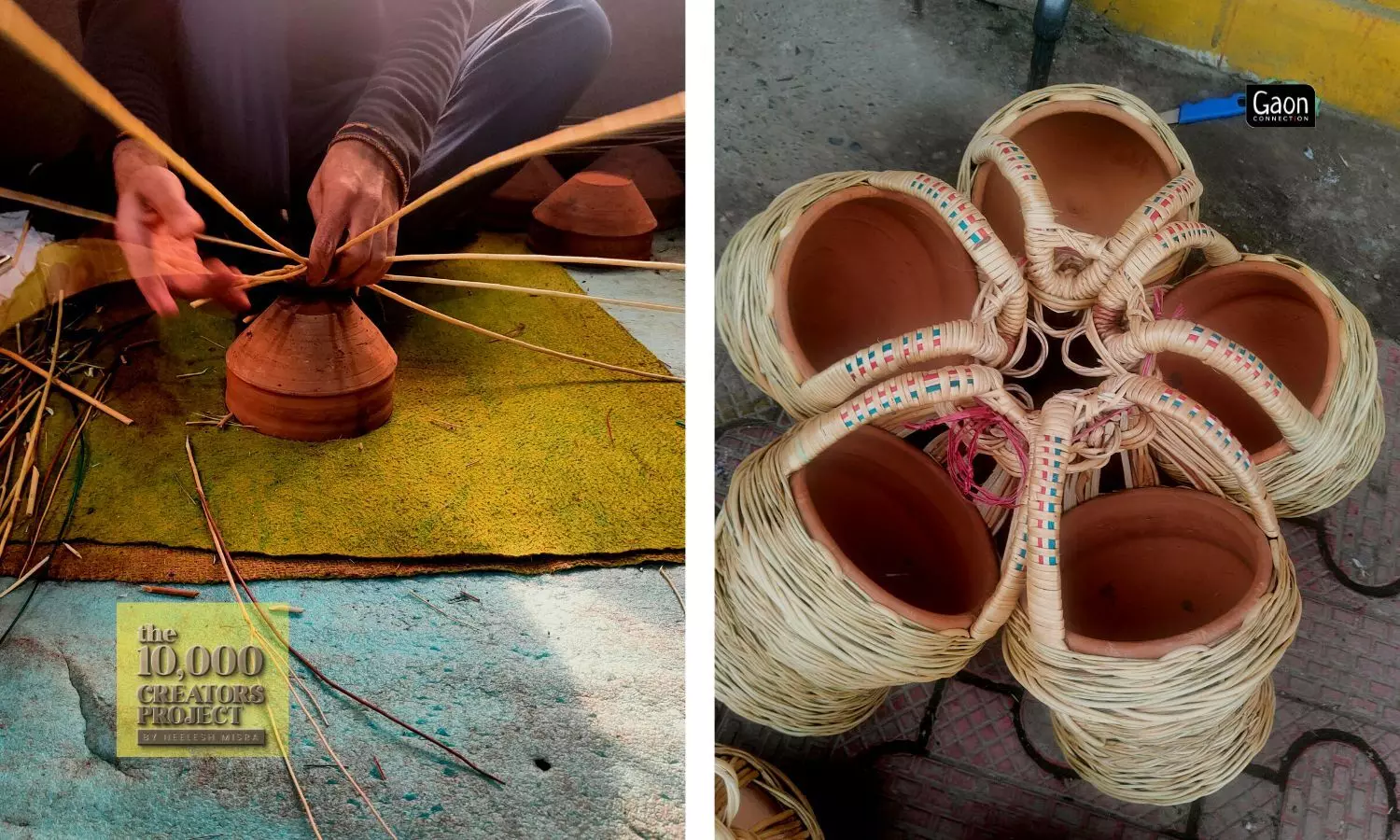Kashmiri Kangri Is Losing Its Warmth
For centuries now, Kashmiri kangri tucked inside a phiran has helped people survive the biting cold winters of Kashmir. But kangri use is on a decline. A report from Okey, the kangri village of Kashmir.
 Mudassir Kuloo 28 Dec 2023 6:50 AM GMT
Mudassir Kuloo 28 Dec 2023 6:50 AM GMT

The kangris (fire pots) are traditionally used to stay warm in the chilling winters in Kashmir. All Photographs by Mudassir Kuloo.
Okey (Kulgam), J&K
The kangris are an integral part of Kashmiri winters and an entire village, Okey in Kulgam district in South Kashmir gets busy making the kangris (fire pots), traditionally used to stay warm in the chilling winters in the valley.
There are about 1,000 families who live in Okey and 80 per cent of the men there are engaged in making the kangris, which requires considerable skill.
Electrification of villages, and improved winter clothing are a few reasons why kangris are not as much in demand as they once were.
The kangri is made up of an earthen pot filled with embers, and the whole thing is encased in wicker (like a pot holder) to make it easy to handle. The embers burn for hours and can emit heat up to 50 degrees celsius.
The people carry it close to their person, either wrapped in a blanket or beneath their phiran (pheran, a garment they wear) to keep themselves warm. The kangri is a popular and economical heating solution.
Also Read: Beating the cold with handmade coal in Kashmir
Bashir Ahmad, a 60-year-old craftsman has been making kangris for 40 years now and he learnt the ropes of making it from his father. “For four generations, our family has been weaving kangris,” he told Gaon Connection.
He weaves seven kangris every day and each sells for anything between Rs 150 and Rs 250. He makes about Rs 400 a day if he is lucky, he said.
The Making of a Kangri
There are some kangris that are made to order and they cost a bit more, between Rs 500 and Rs 1,200, depending on the design, quality and quantity of material used, Bashir Ahmad said.
The earthen pots for kangris are acquired from potters, said Asadullah Zargar, a resident of Okey. Each earthen pot is priced at approximately Rs 15. And the wicker is made out of twigs sourced from several places.
“The twigs are soaked, stripped and then woven around a clay pot, along with handles for ease of carrying. Some craftsmen make the kangri colourful and with different designs,” Zargar said.
But with modern solutions to heating, the kangri is losing its warmth.
There are about 1,000 families who live in Okey and 80 per cent of the men there are engaged in making the kangris, which requires considerable skill.
“Between September and March, Okey village makes around 3,000 kangris each day and distributes them to different regions of Kashmir. A decade ago, we made around 5,000 kangris a day,” said Bashir Ahmad.
“Those of us who make kangris at the onset of winters, usually farm or do labour work the rest of the year,” he added.
History of Kangri
Ghulam Rasool Shaksaz, an 80-year-old man from Okey, claimed that the use of the kangri went back to the 1600s.
“Some believe it is indigenous while others believe that it was imported from Central Asia centuries ago. I learnt that a visitor from Italy to Kashmir taught a villager this craft who then passed it to others,” Shaksaz told Gaon Connection.
“Kangris are made in various other parts of the valley but here in Okey, it is a particularly old occupation. Even those in government jobs or having shops continue to weave the kangri in their free time,” he said.
According to Zargar, the demand and price of kangris have steadily declined over the last decade. “I acquired this skill from my father and passed it on to my three sons,” the 55-year-old told Gaon Connection.
There are some kangris that are made to order and they cost a bit more, between Rs 500 and Rs 1,200, depending on the design, quality and quantity of material used.
A decade ago, he said the cost of a basic kangri was Rs 200, but now it’s available for less than Rs 150. The raw material accounts for 70 per cent of the cost for each kangri, said Zargar.
Declining use of Kangri
Electrification of villages, and improved winter clothing are a few reasons why kangris are not as much in demand as they once were.
“It’s challenging to sustain a decent livelihood in this trade passed down from my father. My three sons and I don’t earn more than Rs 1,000 a day. Since we don’t have any other option, we are doing this job,” Asadullah said. “If the government supports us in preserving this traditional art of making kangris, only then can we sustain this legacy,” he added.
However, according to skin specialist Dr Mushtaq Ahmad, prolonged use of the kangri can cause a form of heat-induced skin carcinoma.
“The excessive use of kangris, as prolonged proximity to the body could lead to various health issues, including skin cancer, which has been the case especially amongst the elderly” Dr Mushtaq warned.
#kashmir #kangri #skincancer
More Stories




